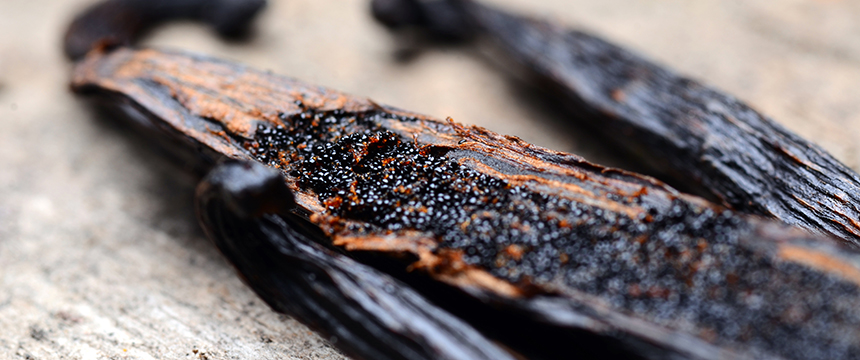New Decision Continues Trend Rejecting Deceptive Vanilla Food Labeling Claims

When consumers make grocery store runs to pick up vanilla ice cream or vanilla almond milk, are they concerned with whether the product is derived solely or primarily from vanilla beans versus being simply vanilla flavored? This is the question that multiple courts have had to decide in response to a continuing stream of cases alleging that various food and beverage companies have mislabeled their vanilla products. So far, decisions show that a plain vanilla approach to referring to vanilla on the product packaging will lead to the tastiest outcome for retailers and manufacturers. One such recent case— Cosgrove v. Oregon Chai— is a motion to dismiss decision that bolsters the growing body of case law disposing of false advertising claims that the term “vanilla” on a product label deceives consumers about the source or content of the vanilla in the product.
Background
At least 85 class action cases have been filed nationwide against grocery chains, pharmacy chains, manufacturers and other companies selling a variety of food products that have the word “vanilla” on their packaging. Most of these cases have been filed by just one law firm, usually in federal courts in New York, California, and Illinois. The complaints all contain similar allegations, that food products labeled as “vanilla” were deceptive because the products contain little or no real vanilla, and the vanilla flavoring was not solely derived from vanilla beans but also from other ingredients.
So far, most courts have been reluctant to let these cases proceed beyond the pleading stage. Where a food product’s label says nothing more than “vanilla,” courts tend to find that a reasonable consumer would not be deceived because vanilla is commonly understood to refer to a flavor, not an ingredient, and there is no evidence the vanilla flavoring is not natural. However, when the label adds more description, such as “made with” or “contains,” or specifically refers to “natural vanilla” instead of the vaguer term “natural ingredients,” some courts have found that the allegations plausibly alleged potential consumer deception and allowed the mislabeling claims to proceed.
The Cosgrove Decision
In the most recent vanilla labelling decision, handed down by the Southern District of New York, the court granted Oregon Chai’s motion to dismiss in Cosgrove v. Oregon Chai, Inc., 19 Civ. 10686 (KPF) (S.D.N.Y. Feb. 22, 2021). Plaintiffs alleged that they, and other consumers of Oregon Chai’s vanilla chai tea latte mix, had “been tricked into believing that the products have more vanilla than other flavors (such as cinnamon or honey) and that the vanilla flavor touted on the packaging comes from vanilla beans, as opposed to artificial vanillins.” Id. at 4. In its dismissal ruling, the court distinguished between construing vanilla as a flavor — which the plaintiffs did not contend and was clearly not deceptive in any event, as the product was in fact vanilla flavored — versus understanding vanilla to be an ingredient, which the plaintiffs did allege deceptively suggested that the vanilla derived from vanilla beans. The court found it likely that a reasonable consumer would understand the label term “vanilla” to mean vanilla flavoring. But even if a reasonable consumer would view “vanilla” as referring to an ingredient, the Court also rejected the plaintiffs’ claim, noting that:
[T]here is nothing [on the packaging] to suggest the exclusive, or even predominant, use of vanilla beans as opposed to other sources. There is no reference to ‘vanilla bean’ or ‘vanilla extract’ anywhere on the packaging; nor is there any reference to the product being ‘made with’ or ‘made from’ any part of the vanilla plant (the reference instead being ‘Made with Natural Ingredients[.]’
Use of Consumer Survey Data
When evaluating whether a label claim is deceptive under statutory consumer protection law, most courts use a reasonable consumer standard to determine whether a consumer acting reasonably in the circumstances would be misled by the label. Given this standard, one strategy used by plaintiffs is to include allegations in vanilla complaints about consumer survey data in an effort to plausibly allege a consumer’s reasonable expectations. Depending, however, on whether the scenario presented in the survey matched with the specific product’s labeling, this tactic has been met with only limited success in getting past a motion to dismiss. While the Oregon Chai plaintiffs did not cite any consumer survey data, the plaintiffs did use survey data in Pichardo v. Only What You Need, Inc., No. 20 Civ. 493 (VEC), 2020 WL 6323775 (S.D.N.Y. Oct. 27, 2020), another case brought by the prolific plaintiffs’ firm.
The Pichardo case concerned a vanilla flower image and the words “Smooth Vanilla” on the packaging of a non-dairy, vanilla-flavored protein beverage. While the beverage did contain some vanilla from the vanilla plant, it also contained vanillin derived from a natural source material other than vanilla extract. The plaintiffs included in their pleadings a consumer survey purporting to demonstrate that more than 70% of respondents believed the beverage product flavor to come “only from vanilla beans” and that almost 50% of respondents would be less likely to purchase the product if they knew the flavor did not come solely from a vanilla plant. Id. at *1. The court was unmoved by this data and dismissed the complaint with prejudice, finding that a reasonable consumer would not be misled by the defendant’s label, as there were no references to the product being “made with vanilla extract” or even simply using the term “vanilla extract.” Id. at *3. Although the court acknowledged that survey evidence can be persuasive in cases of alleged consumer deception, it found that the survey before it did not plausibly support the plaintiffs’ claim because the language of the survey itself only showed that over 70% of respondents believed the vanilla taste came from vanilla plants, not that the taste came solely from vanilla plants. Further, the court did not find the “Smooth Vanilla” label to be misleading because “absent additional facts,” reasonable consumers associate the word “vanilla” with a flavor, not with an ingredient, and the use of the term “vanilla” does not imply that there are no flavoring ingredients other than the vanilla bean.
The “additional facts” referenced by the Pichardo court were present in Sharpe v. A&W Concentrate Co., No. 19 Civ. 768 (BMC), 481 F. Supp. 3d 94 (E.D.N.Y. 2020), yet another case brought by the same plaintiffs’ firm. Sharpe considered packaging for root beer and cream soda beverage products that included the phrase “MADE WITH AGED VANILLA,” when the vanilla flavor was derived predominately from ethyl vanillin, which is an artificial synthetic ingredient. Plaintiffs there included a survey of 411 consumers, in which “68% of surveyed consumers believed that the statement meant that the vanilla flavor ‘comes from a vanilla plant, such as a vanilla extract, which is made from vanilla beans from the vanilla plant.’” Id. at 97-98. The court denied the defendant’s motion to dismiss and held that the plaintiffs plausibly alleged that the “MADE WITH AGED VANILLA” representation — prominently displayed underneath the A&W logo on the front label of the bottle or box, bolded and in all capital letters — falsely implied that any vanilla content derives predominantly from the vanilla plant instead of its artificial and synthetic counterpart. Citing to the consumer survey allegations, the court explained that “[t]his determination is further bolstered by the persuasive extrinsic evidence that the overwhelming percentage of consumers share this misconception.” Id. at 103.
Conclusion
The takeaway from key vanilla labelling decisions to date is that challenges to the term “vanilla,” without additional language or imagery of vanilla plants or beans on the label, are unlikely to go far. Indeed, there are a number of motions to dismiss pending decision in vanilla cases. Nevertheless, recent dismissals have not stopped plaintiffs from continuing to file lawsuits regarding the labeling of vanilla products, most recently in Illinois and New York, perhaps suggesting a strategy of attempting to extract a quick settlement from defendants who may not want to incur the costs of litigation or run the risk that a motion to dismiss will be denied. The recent Illinois cases in particular are worth keeping an eye on, as they are the first vanilla cases in that jurisdiction, and it will be interesting to see whether courts there will follow the trend set by the California and New York federal courts. We will continue to monitor those cases and update this post as decisions come down.
